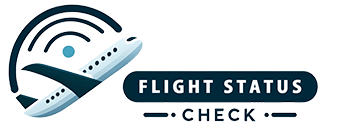The Status of Spirit Flight: A Look at the Airline’s Progress and Challenges
Spirit Airlines, the American ultra-low-cost carrier, has been making waves in the aviation industry in recent years. With its affordable ticket prices and a growing route network, the airline has been attracting a significant number of passengers and gaining popularity among budget-conscious travelers. However, the airline has also faced some challenges and criticisms along the way. In this article, we will take a closer look at the status of Spirit Flight, its progress, and the challenges it’s currently facing.
Progress and Growth
Spirit Airlines has come a long way since its inception in 1983. What started as a small charter airline in Michigan has now grown into a major player in the aviation industry, serving over 70 destinations in the United States, Latin America, and the Caribbean. The airline has made a name for itself by offering ultra-low fares and a no-frills approach to air travel, appealing to budget travellers and those looking for a no-nonsense flying experience.
The airline’s growth can be attributed to its aggressive expansion strategy, adding new routes and increasing its fleet size. Spirit has been steadily expanding its network, connecting more cities and providing affordable air travel options to a wider customer base. In addition, the airline has been modernizing its fleet, introducing state-of-the-art aircraft to improve the overall flying experience for its passengers.
One of the key factors contributing to Spirit’s progress is its focus on ancillary revenue. The airline offers a range of optional services and add-ons, such as baggage fees, seat assignments, and in-flight amenities, allowing passengers to customize their travel experience and providing additional revenue streams for the airline. This ancillary revenue strategy has proven to be successful for Spirit, helping the airline offset its low ticket prices and maintain profitability.
Challenges and Criticisms
Despite its growth and success, Spirit Airlines has faced its fair share of challenges and criticisms. One of the main criticisms the airline has received is its reputation for poor customer service and a lack of amenities. Many passengers have complained about the airline’s strict policies, hidden fees, and uncomfortable seating, leading to a negative perception of the airline among some travelers.
Furthermore, Spirit has been criticized for its on-time performance and operational reliability. The airline has often ranked lower in on-time arrival and departure statistics compared to its competitors, leading to frustrations among passengers and potentially impacting the overall flying experience.
Another challenge that Spirit has faced is increased competition in the ultra-low-cost carrier market. With the rise of other budget airlines and the expansion of legacy carriers’ budget subsidiaries, the competition has become more intense, making it challenging for Spirit to stand out and retain its customer base.
In addition, the airline has faced operational challenges, such as labor disputes and technical issues, which have impacted its day-to-day operations and led to disruptions for passengers.
Efforts to Improve
In response to these challenges, Spirit Airlines has been making efforts to improve its customer service and operational performance. The airline has implemented a number of initiatives to enhance the overall passenger experience, including improving its on-time performance, upgrading its fleet, and investing in new technologies to streamline operations and improve reliability.
Spirit has also been working towards enhancing its customer service, with a focus on transparency and communication. The airline has been revising its policies and fees to make them more customer-friendly, and has been implementing training programs for its staff to improve customer interactions and overall satisfaction.
Furthermore, Spirit has been investing in technology and infrastructure to modernize its operations and provide a more seamless travel experience for its passengers. The airline has been upgrading its reservation system, improving its website and mobile app, and enhancing its digital capabilities to make it easier for customers to book and manage their flights.
Looking Ahead
As Spirit Airlines continues to grow and evolve, the airline is facing a new set of challenges and opportunities. The ongoing recovery from the COVID-19 pandemic has had a significant impact on the aviation industry, and Spirit is no exception. The airline has had to navigate through the uncertainties and disruptions caused by the pandemic, leading to changes in its route network, fleet size, and overall operations.
Despite these challenges, Spirit is optimistic about the future and is looking towards expanding its presence in key markets, adding new routes, and attracting more customers. The airline is also focused on sustainability and environmental initiatives, aiming to reduce its carbon footprint and implement more eco-friendly practices.
In conclusion, Spirit Airlines has made significant progress and faced a number of challenges in its journey to become a leading ultra-low-cost carrier. The airline’s growth and expansion have made it a popular choice for budget travelers, but it has also faced criticisms and obstacles along the way. Nevertheless, Spirit is focused on improving its operations, enhancing customer service, and adapting to the changing landscape of the aviation industry. As the airline continues to navigate through its challenges and opportunities, it remains a key player in the airline industry and a viable option for budget-conscious travelers.

Leave a Reply